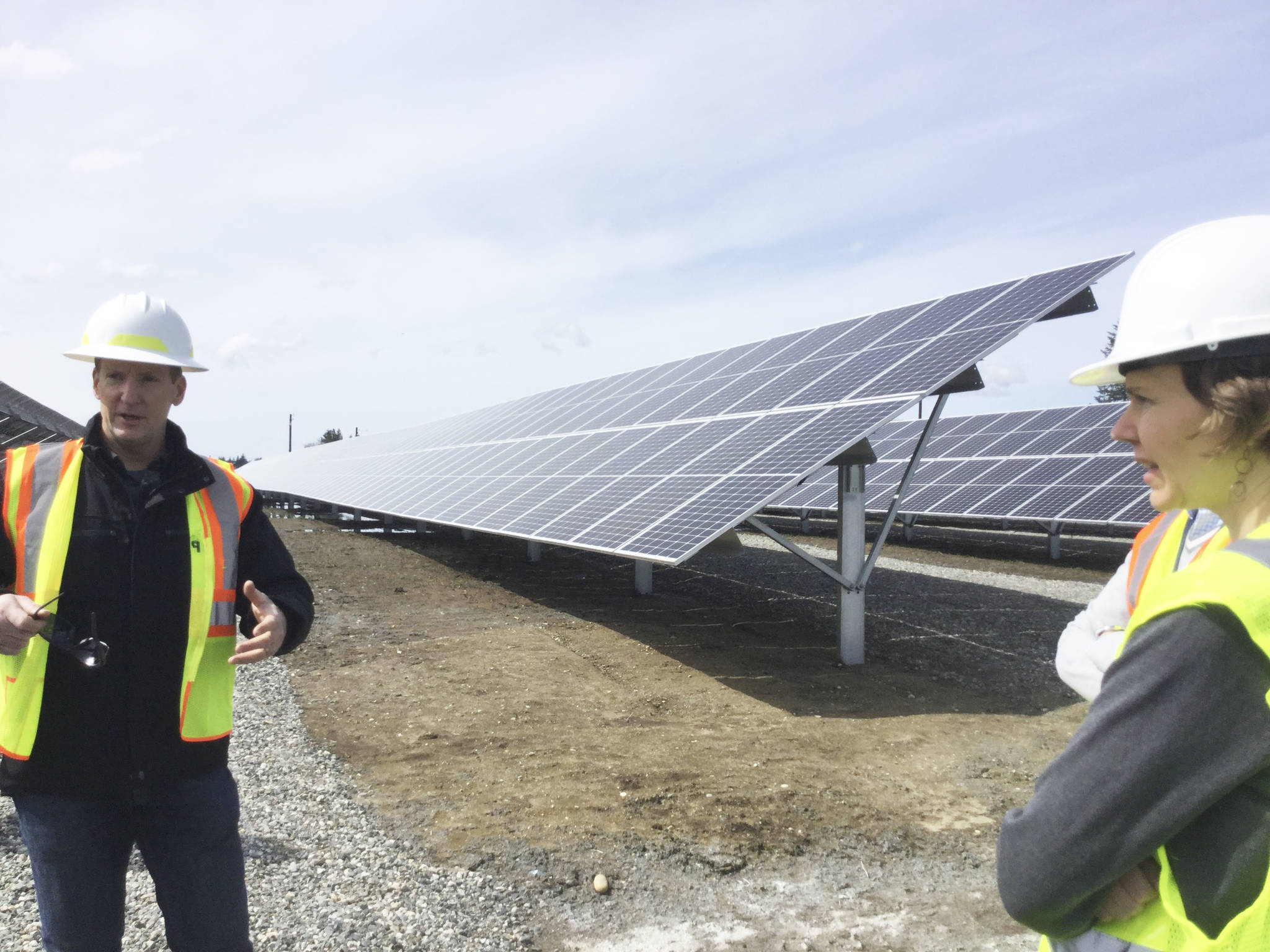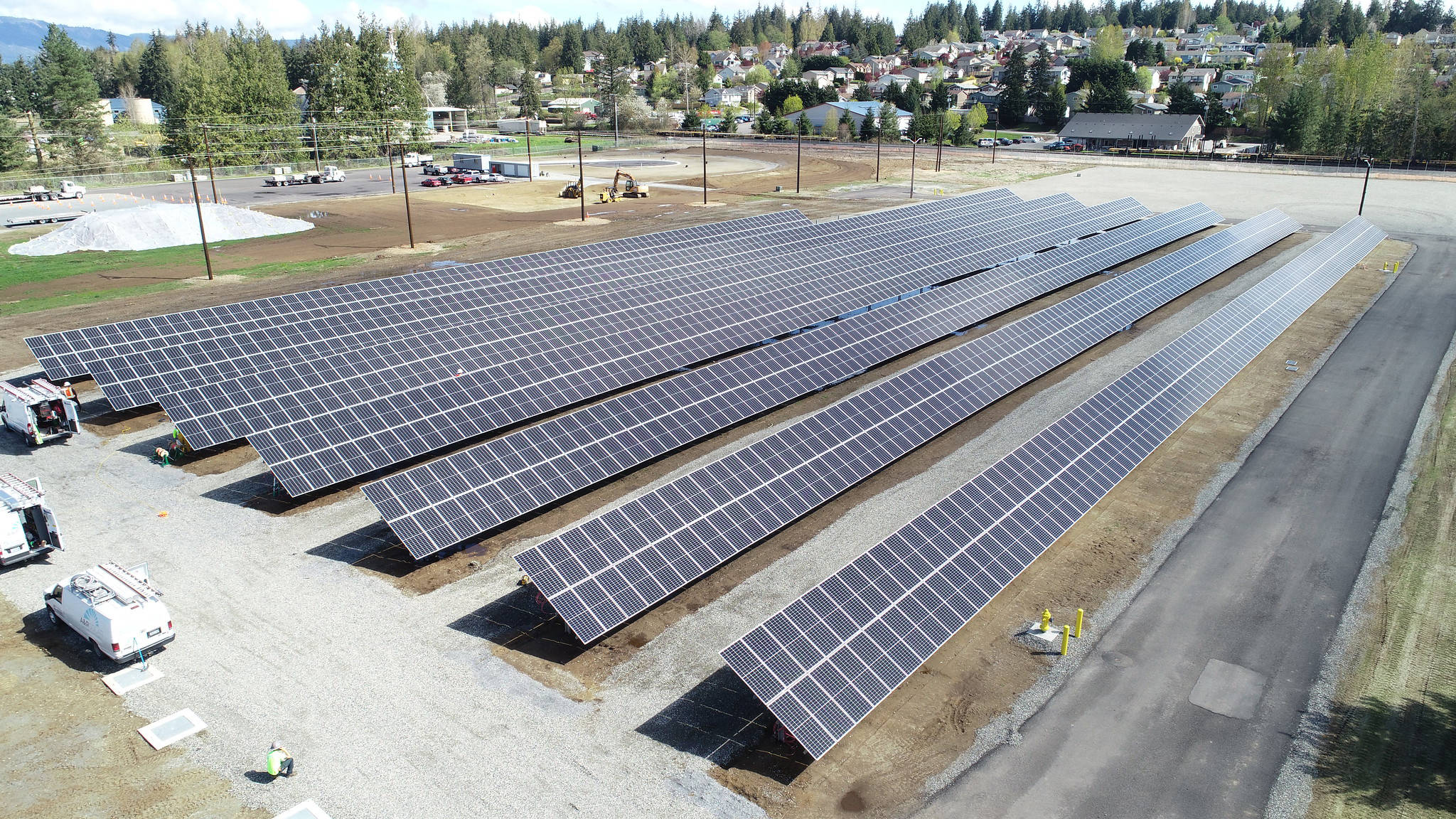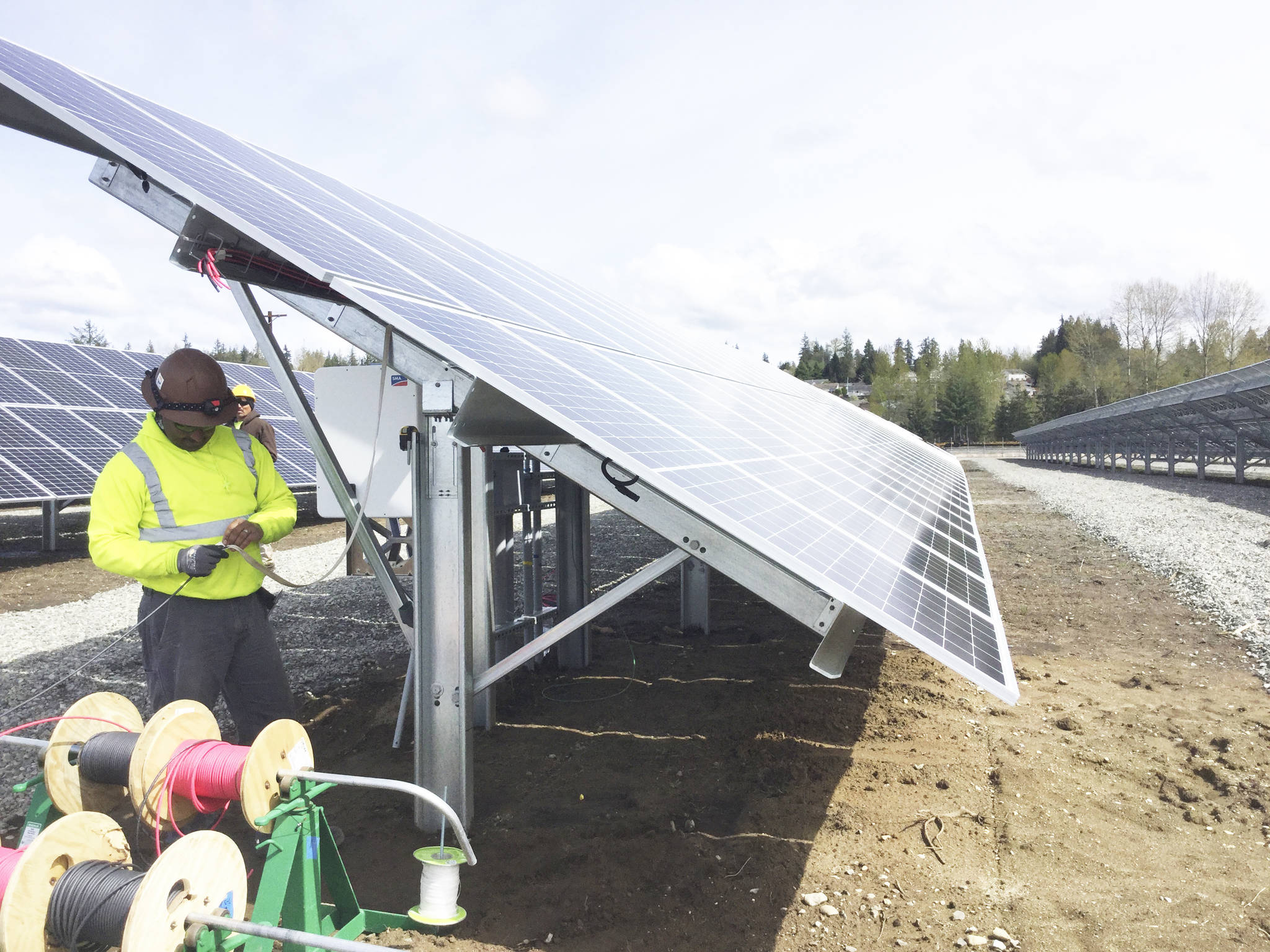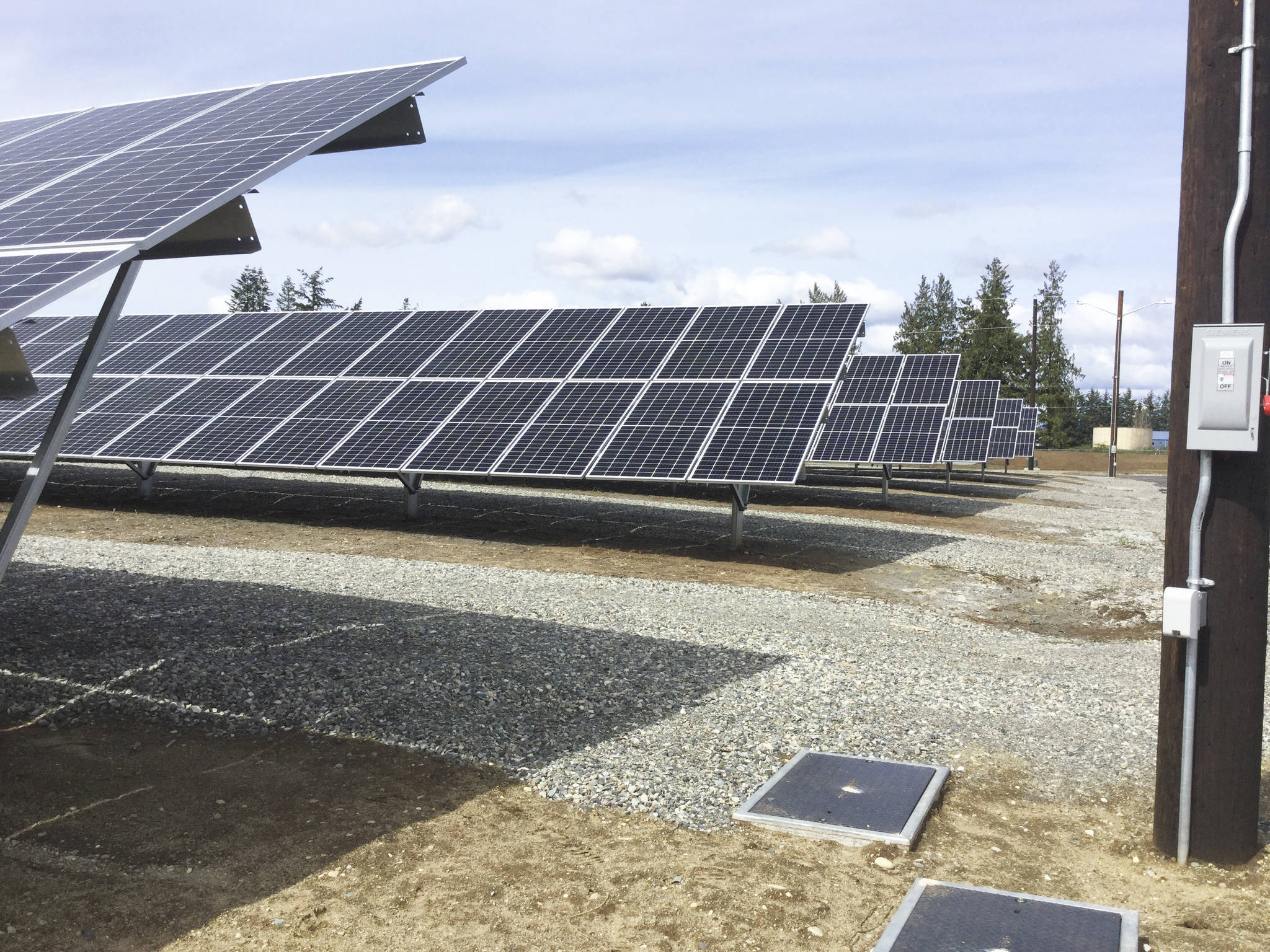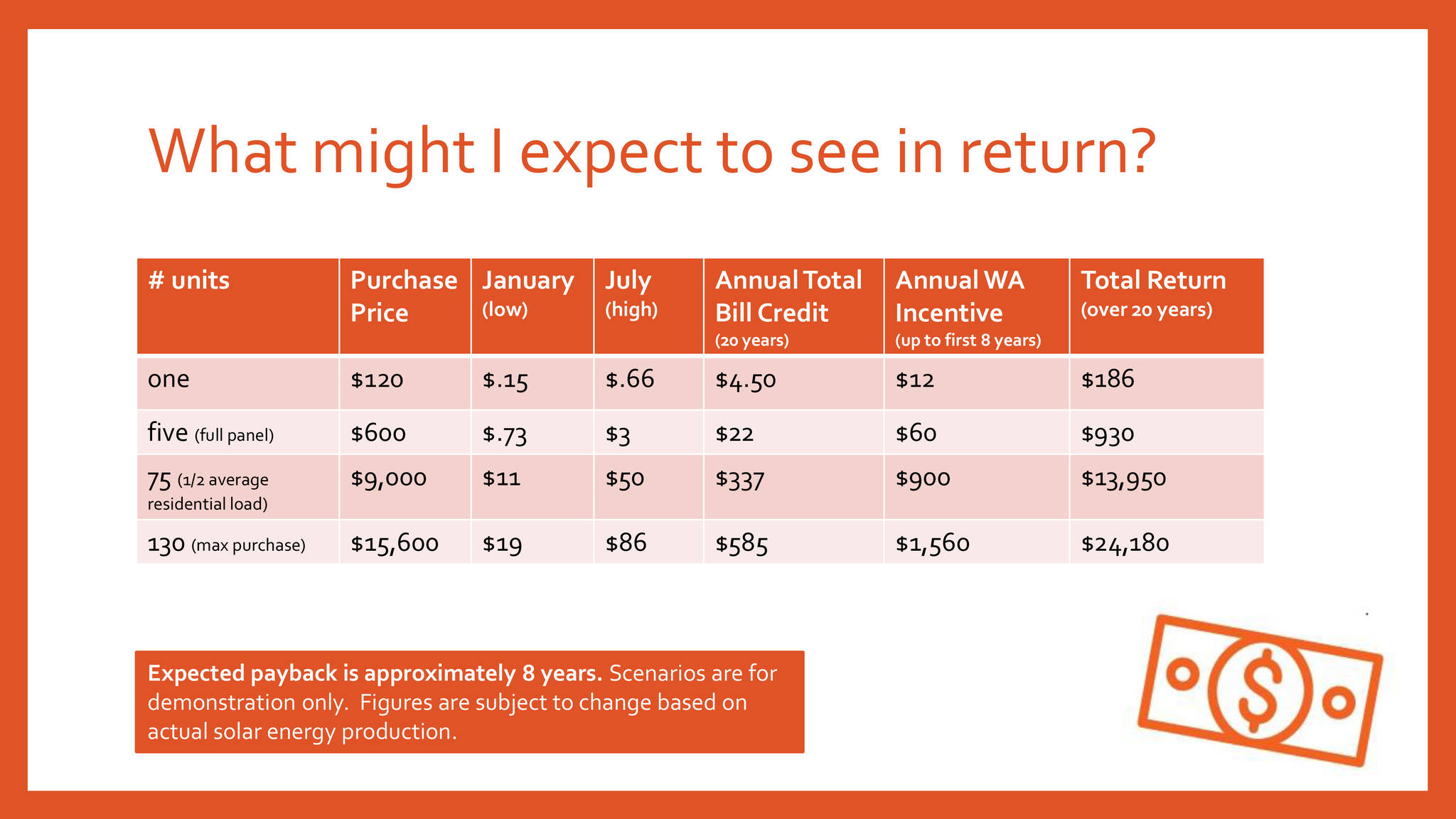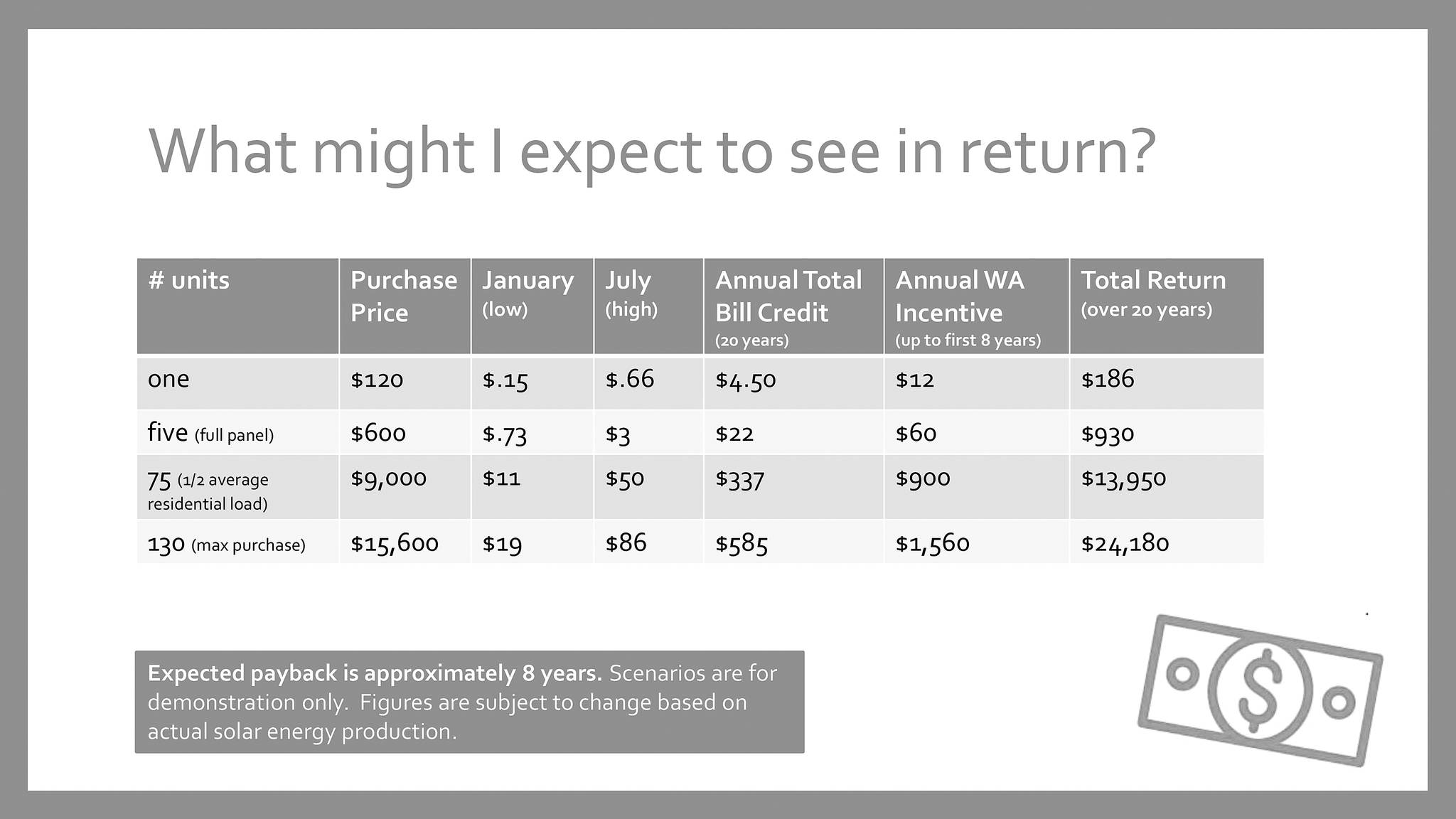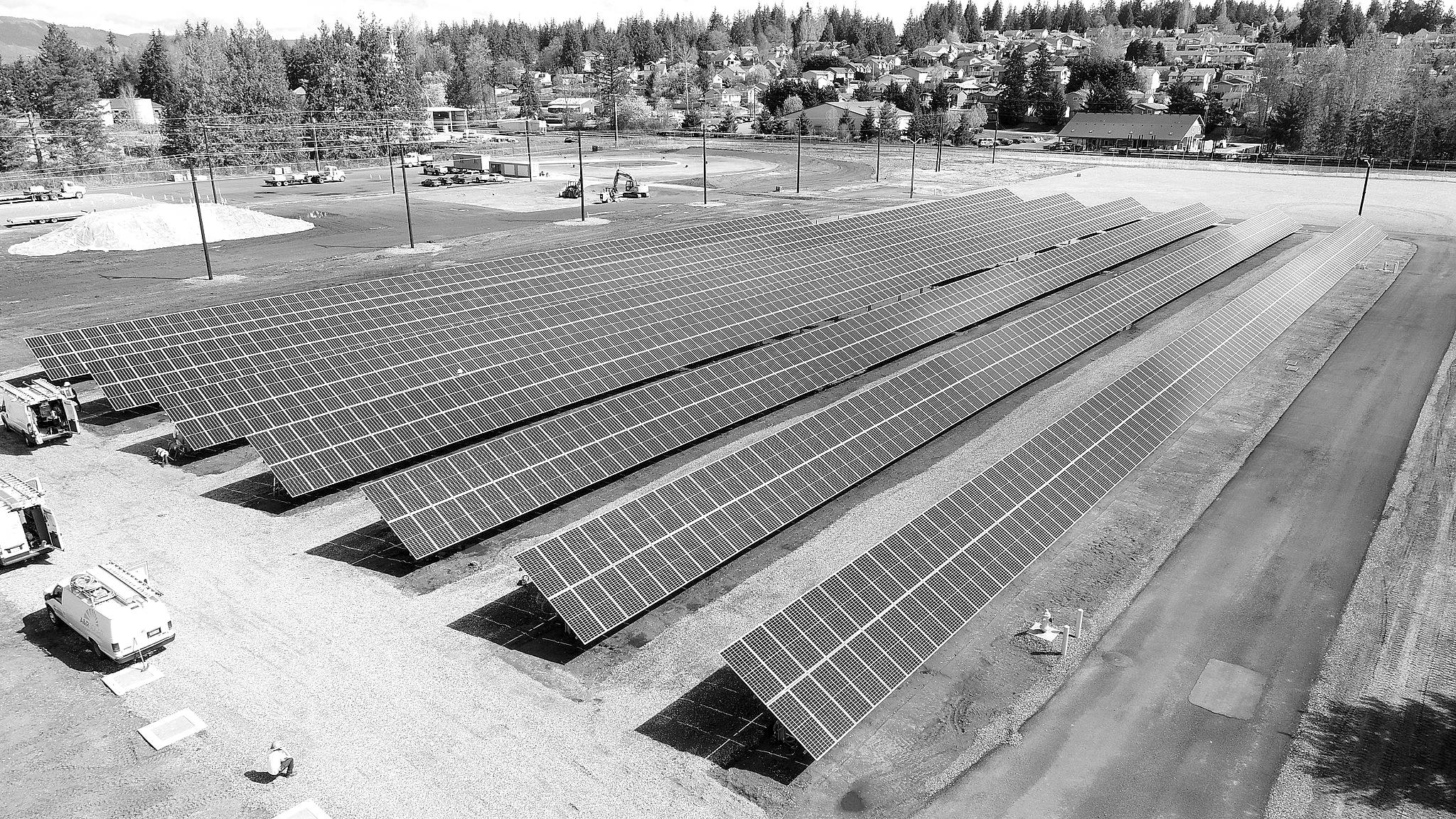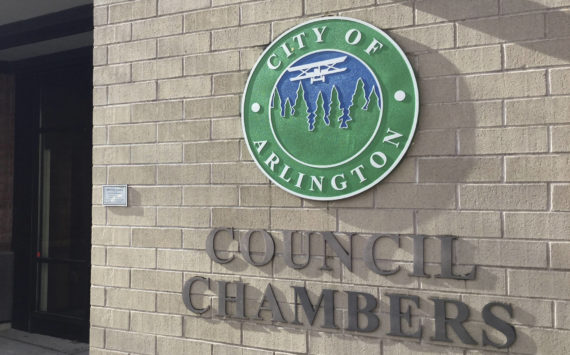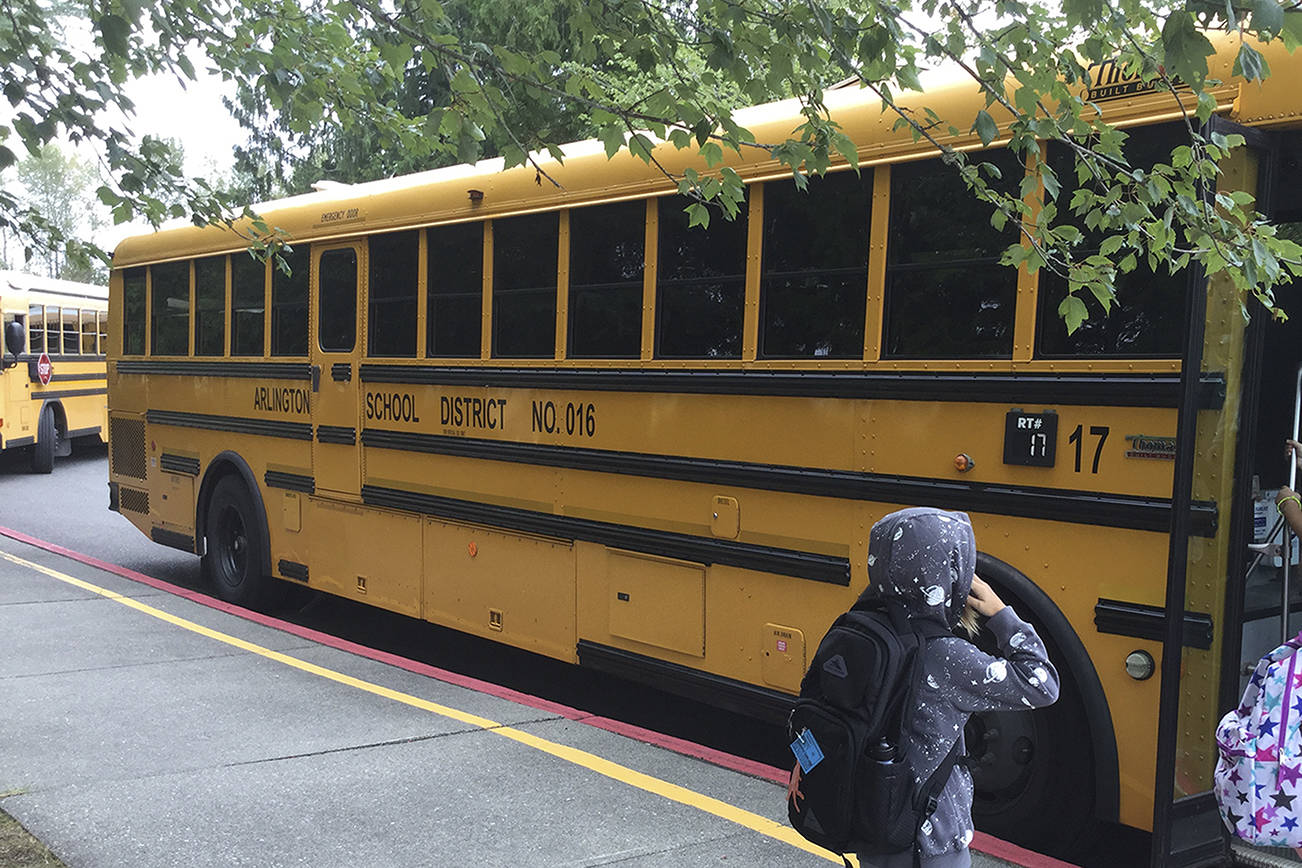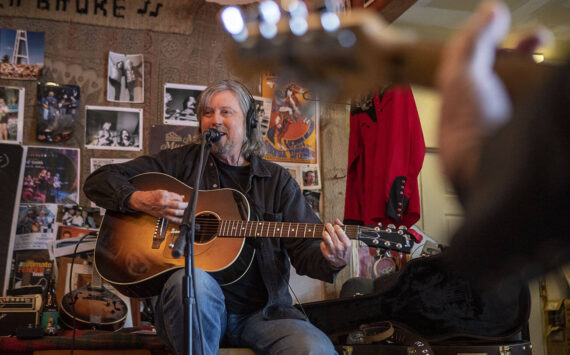ARLINGTON – Snohomish County PUD is launching an innovative new program on Earth Day that will let customers go solar and save money on their electric bills.
Through the PUD’s new Community Solar program, customers starting April 22 will be able buy solar energy units as an alternative to rooftop solar power, while supporting the development of renewable energy in the region.
Project managers said that once the pilot project is up and running, it will be the largest Community Solar program in Washington state.
Sales of solar energy units for the program will begin at 8 a.m. April 22. Customers interested in buying the 76-watt solar energy units can visit www.snopud.com/communitysolar.
“We’ve had outstanding response,” said Community Solar program manager Suzy Oversvee, citing over 200 individuals that attended open houses, in addition to numerous phone and email inquiries.
Each solar energy unit is one-fifth of a solar panel and costs $120. The PUD’s program consists of 8,100 solar energy units (1,620 panels), and customers will be limited to purchasing up to 26 panels, or 130 units.
Customers who buy solar energy units will see a 6-cent per kilowatt-hour credit on their bill equal to the portion of the solar system’s production. In addition, customers will also receive an annual incentive payment provided by Washington state.
The solar array, which covers 2 acres of the PUD’s property near the Arlington Airport, will be the main generation sources for the PUD’s future Arlington Microgrid, PUD spokesman Aaron Swaney said. On average, it will generate enough electricity to power around 50 homes.
Seattle-based A&R Solar is building the solar array, with construction expected to wrap this week.
Community Solar “is a way to invest in energy and get a little back in return,” PUD project manager Scott Gibson said.
The complex on 25 acres east of the airport at 17601 59th Ave. NE will also feature a vehicle-to-grid charging station for PUD’s Nissan Leaf electric vehicles, battery storage, Clean Energy Technology Center, a substation and backup data center, and later a new local office and training center.
Through the project, PUD will learn more about the challenges of using a microgrid for renewable energy integration and grid resiliency.
The microgrid’s focus is grid resiliency and disaster recovery, benefitting PUD’s north end customer base stretching from Marysville to the communities across the Stillaguamish Valley, and Stanwood and Camano Island. The microgrid, in the event of a Cascadia earthquake event, wind or ice storm, would be able to seamlessly disconnect from the grid to keep a critical load of power up in the north county.
The $9.5 million project is funded in part through a $3.5 million Washington Clean Energy Fund grant.
